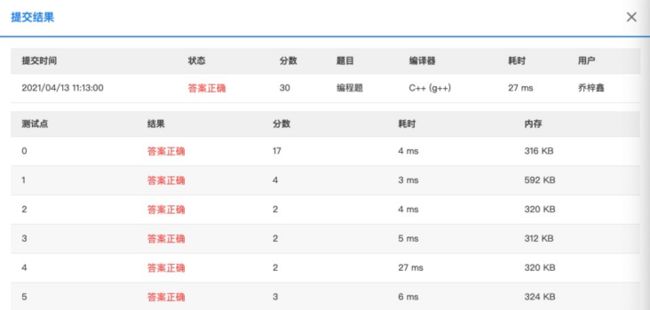7-4 Chemical Equation (30 分)
A chemical equation is the symbolic representation of a chemical reaction in the form of symbols and formulae, wherein the reactant entities are given on the left-hand side and the product entities on the right-hand side. For example, $$CH_4+2O_2=CO_2+2H_2O$$
means that the reactants in this chemical reaction are methane and oxygen: CH4 and O2, and the products of this reaction are carbon dioxide and water: CO2 and H2O.
Given a set of reactants and products, you are supposed to tell that in which way we can obtain these products, provided that each reactant can be used only once. For the sake of simplicity, we will consider all the entities on the right-hand side of the equation as one single product.
Input Specification:
Each input file contains one test case. For each case, the first line gives an integer N (2≤N≤20), followed by N distinct indices of reactants. The second line gives an integer M (1≤M≤10), followed by M distinct indices of products. The index of an entity is a 2-digit number.
Then a positive integer K (≤50) is given, followed by K lines of equations, in the format:
$$ reactant_1 + reactant_2 + ... + reactant_n -> product $$
where all the reactants are distinct and are in increasing order of their indices.
Note: It is guaranteed that
- one set of reactants will not produce two or more different products, i.e. situation like 01 + 02 -> 03 and 01 + 02 -> 04 is impossible;
- a reactant cannot be its product unless it is the only one on the left-hand side, i.e. 01 -> 01 is always true (no matter the equation is given or not), but 01 + 02 -> 01 is impossible; and
- there are never more than 5 different ways of obtaining a product given in the equations list.
Output Specification:
For each case, print the equations that use the given reactants to obtain all the given products. Note that each reactant can be used only once.
Each equation occupies a line, in the same format as we see in the inputs. The equations must be print in the same order as the products given in the input. For each product in order, if the solution is not unique, always print the one with the smallest sequence of reactants -- A sequence $${ a_1,⋯,a_m }$$ is said to be smaller than another sequence $${ b_1 ,⋯,b_n } $$if there exists $$1≤i≤min(m,n)$$ so that $$a_j =b_j \;\; for \;\;all\;\; j It is guaranteed that at least one solution exists. 给定n个反应物,m个生成物和k个化学反应方程式。要求根据反应物和化学方程式输出可以获得生成物的化学方程式,生成规则如下: 此题好像只能使用深度优先遍历来处理,原因在于需要将所有的生成物进行生成,并且题目保证一定存在一个解。那么使用贪心算法取每一次获得当前生成物字典序最小的有可能会导致后面的生成物无法生成的情况。为了方便进行搜索我们使用结构体Equation来封装我们需要的数据,这里将算法的过程分为预处理和DFS。 首先在输入所有反应物的时候标记reactants[index] = true,在输入生成物的时候需要建立product->product这样的方程式添加到products集合中,并同时标记当前成物为反应物。最后在输入每一行的化学方程式的时候使用process函数进行处理,将其封装为一个Equation,并添加到products集合中。 我们使用输入的生成物数组pro的下标来代表当前搜索的位置,起始为0,终止位置为m-1,DFS(proCur,proEnd)的含义为数组[proCur,proEnd-1]的生成物是否可以被生成,如果可以返回true,否则返回false。那么原问题的解就是DFS(0,m)。那么递归边界和递归体分别为:Sample Input:
8 09 05 03 04 02 01 16 10
3 08 03 04
6
03 + 09 -> 08
02 + 08 -> 04
02 + 04 -> 03
01 + 05 -> 03
01 + 09 + 16 -> 03
02 + 03 + 05 -> 08Sample Output:
02 + 03 + 05 -> 08
01 + 09 + 16 -> 03
04 -> 04题目要求
题目大意
算法思路
struct Equation {
string equation;
vector数据的预处理
DFS
注意点
提交结果
AC代码
#include

